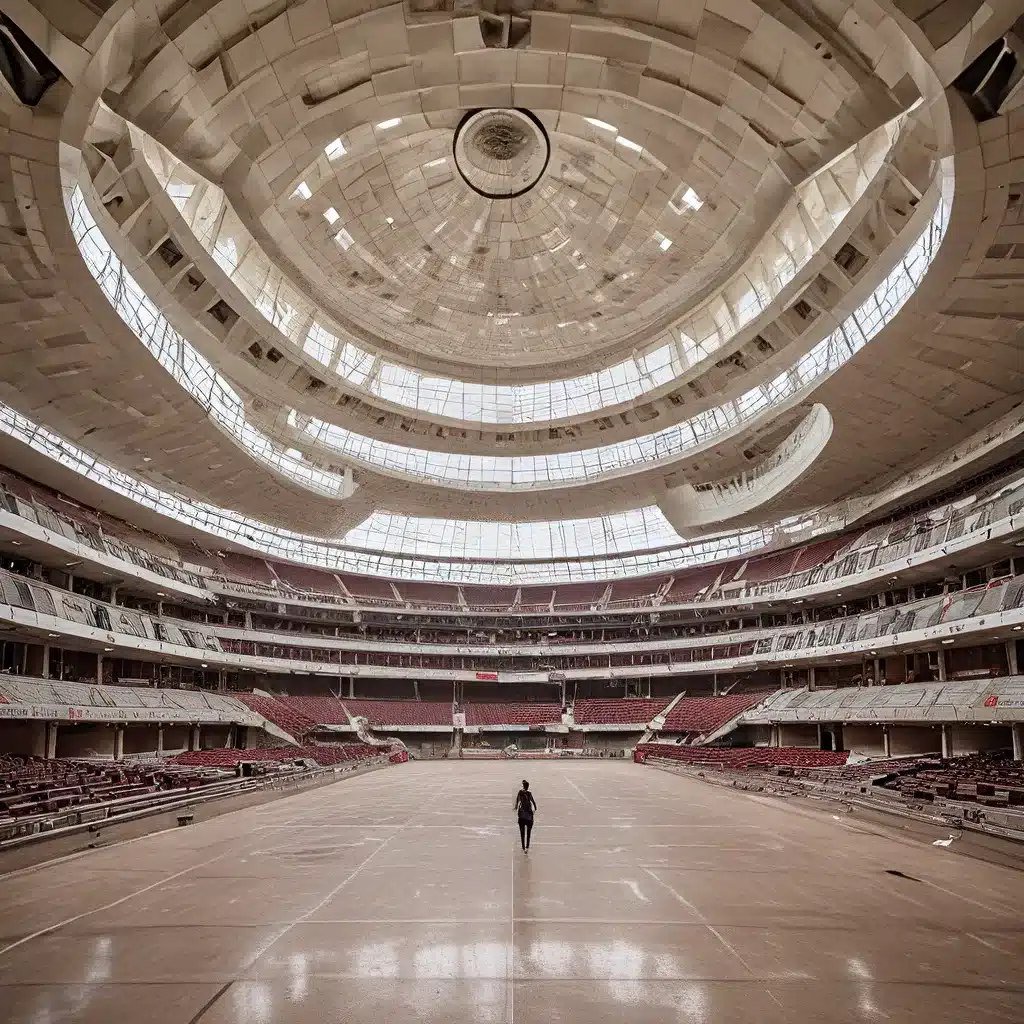
The Storied Past and Vibrant Present of Moscow’s Iconic Sports Venue
Nestled in the heart of Moscow, the Luzhniki Stadium stands as a testament to Russia’s rich sporting heritage, a colossal structure that has borne witness to some of the most momentous athletic events in the nation’s history. From its humble beginnings as the Central Lenin Stadium, this architectural marvel has evolved over the decades, transforming itself to meet the ever-changing demands of the global sporting landscape.
The roots of Luzhniki Stadium can be traced back to the 1920s, when the Soviet government recognized the need for a centralized hub for athletic activities. In 1923, the decision was made to construct a massive sports complex on the banks of the Moskva River, an endeavor that would take nearly three decades to complete. The original design, conceived by a team of renowned Soviet architects, envisioned a sprawling, multi-purpose facility that could accommodate a variety of sporting disciplines, from track and field to football and beyond.
Luzhniki Stadium officially opened its doors in 1956, marking a significant milestone in the nation’s sports infrastructure. The stadium’s distinctive architectural style, characterized by its grand, neoclassical facade and sweeping, horseshoe-shaped design, became an iconic symbol of the Soviet era. Over the years, the stadium has undergone a series of renovations and expansions, each iteration reflecting the evolving priorities and aspirations of the Russian sporting landscape.
Hosting Iconic Sporting Events
The Luzhniki Stadium has played a pivotal role in many of Russia’s most celebrated sporting achievements. In 1980, the stadium played host to the Summer Olympics, becoming a global stage for some of the world’s greatest athletes. The 1980 Olympic Games were a seminal moment in the stadium’s history, as it played host to a wide range of events, from the opening and closing ceremonies to a variety of track and field competitions and the football final.
The stadium’s reputation as a premier sporting venue continued to grow in the subsequent decades, as it welcomed a host of international events. In 1999, it was the site of the UEFA Champions League Final, a thrilling match that captured the attention of football enthusiasts worldwide. The stadium’s ability to seamlessly transition between different sports and accommodate large-scale events cemented its status as a true icon of Russian sporting culture.
Renovations and Revitalization
As the 21st century dawned, the Luzhniki Stadium faced a new challenge: the need to modernize and adapt to the evolving demands of the global sporting landscape. In the early 2000s, the Russian government embarked on a comprehensive renovation project, with the goal of transforming the stadium into a state-of-the-art facility capable of hosting the world’s most prestigious events.
The 2018 FIFA World Cup served as a catalyst for the stadium’s most recent transformation. In the years leading up to the tournament, the Luzhniki underwent a dramatic overhaul, with a focus on enhancing its infrastructure, seating capacity, and overall fan experience. The renovation process, overseen by a team of renowned architects and engineers, seamlessly blended the stadium’s historic character with cutting-edge design elements.
Stadium Journey reports that the revitalized Luzhniki Stadium now boasts a seating capacity of over 81,000, making it one of the largest stadiums in Europe. The facility’s state-of-the-art amenities, including modern hospitality suites, VIP lounges, and impressive broadcast facilities, have firmly cemented its reputation as a world-class sporting venue.
Architectural Marvels and Design Innovations
The Luzhniki Stadium’s architectural heritage is a testament to the evolving design philosophies that have shaped Russia’s sports infrastructure. The original neoclassical design, with its imposing columns and grand, symmetrical facade, reflected the aesthetic sensibilities of the Soviet era. However, the stadium’s subsequent renovations have seamlessly incorporated more modern design elements, creating a harmonious blend of the old and the new.
One of the most striking features of the Luzhniki Stadium is its iconic arched roof, which not only serves a functional purpose but also contributes to the building’s overall aesthetic appeal. The roof’s sweeping curves and sleek lines evoke a sense of movement and dynamism, mirroring the energy and excitement of the sporting events that take place within its confines.
The stadium’s recent renovation has also seen the incorporation of sustainable design principles, further enhancing its environmental credentials. The integration of energy-efficient systems, such as LED lighting and advanced climate control technologies, has helped to reduce the facility’s carbon footprint and ensure its long-term viability.
Moreover, the Luzhniki Stadium’s design has been carefully crafted to enhance the fan experience, with thoughtful considerations given to sight lines, accessibility, and overall comfort. The stadium’s layout and seating arrangements have been optimized to provide unobstructed views of the action, while its expansive concourses and hospitality areas offer ample space for spectators to gather, socialize, and immerse themselves in the excitement of the event.
A Lasting Legacy
As the Luzhniki Stadium continues to evolve, it stands as a testament to the enduring power of sports to unite and inspire. This iconic venue has not only hosted some of the most memorable athletic feats in Russia’s history but has also played a pivotal role in shaping the nation’s cultural identity and global reputation.
The stadium’s ability to adapt and reinvent itself over the decades is a testament to the vision and dedication of the architects, engineers, and sports enthusiasts who have dedicated themselves to its preservation and enhancement. As the world turns its attention to Russia’s sporting prowess, the Luzhniki Stadium remains a shining example of the country’s commitment to excellence, innovation, and the enduring spirit of athletic competition.
Whether hosting international tournaments, national championships, or community-based sporting events, the Luzhniki Stadium continues to captivate and inspire, leaving an indelible mark on the hearts and minds of all who set foot within its hallowed walls.

